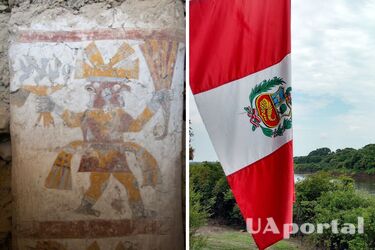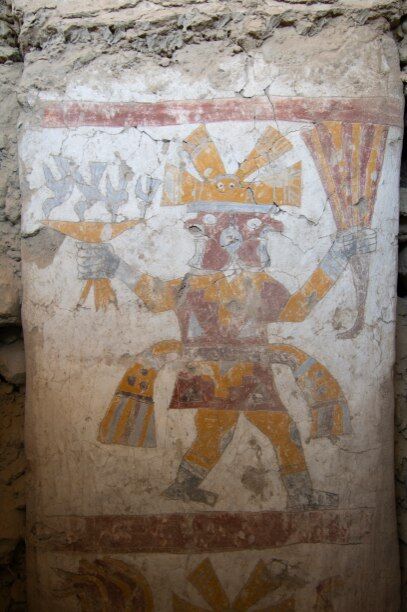1400-year-old frescoes depicting two-faced men discovered in Peru (photo)

During excavations at the archaeological site of the late Moche period (circa 600-850 AD) in Pañamarca in northwestern Peru, researchers discovered two new frescoes. The finds are painted on the adobe walls of an ancient architectural complex.
They depict two two-faced faces, one painted on top and the other on the bottom of one adobe pillar in the hall. This was reported by The History Blog.
It is noted that both two-faced figures wear hats or crowns and brightly coloured clothes with large belts. They hold unusual things in their hands.
Read also: Archaeologists unearth 1200-year-old temple complex in Peru
The top one holds a cup with four hummingbirds in one hand and a feather fan in the other. The lower man is waving a feather fan and a stick-like object. Due to the damage to the painting, it is difficult to determine what these are.

There are no known precedents for these figures in Moche art. They do not have the features typical of Moche deities, namely zoomorphic elements such as fangs, claws, tails or wings.

Archaeologists suggest that the two two-headed figures may have been an artistic exploration of the depiction of people (and feathers) in motion, not two-headed monsters or gods, but people depicted in blurred motion, like two frames of animation on one panel.

Earlier, archaeologists from the Israel Antiquities Authority unearthed a papyrus payroll in the area of the ancient fortress of Masada, written in the name of a Roman soldier.
If you want to get the latest news about the war and events in Ukraine, subscribe to our Telegram channel!
